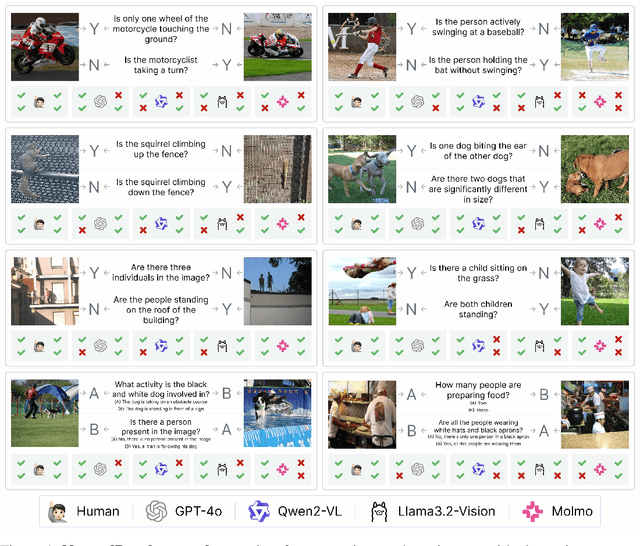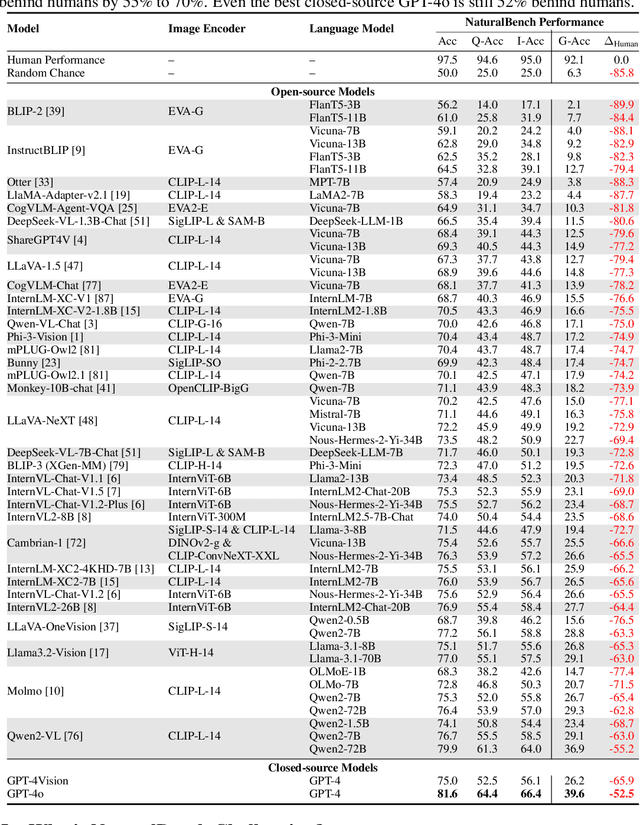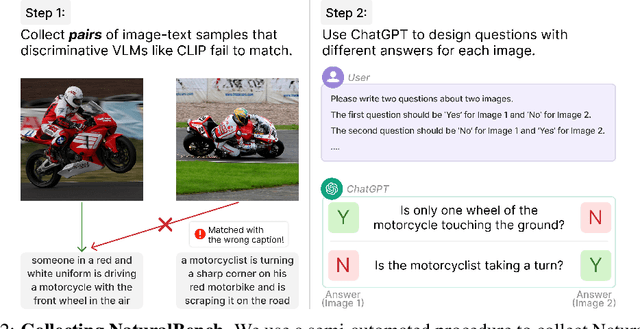Jean de Dieu Nyandwi
Pangea: A Fully Open Multilingual Multimodal LLM for 39 Languages
Oct 21, 2024Abstract:Despite recent advances in multimodal large language models (MLLMs), their development has predominantly focused on English- and western-centric datasets and tasks, leaving most of the world's languages and diverse cultural contexts underrepresented. This paper introduces Pangea, a multilingual multimodal LLM trained on PangeaIns, a diverse 6M instruction dataset spanning 39 languages. PangeaIns features: 1) high-quality English instructions, 2) carefully machine-translated instructions, and 3) culturally relevant multimodal tasks to ensure cross-cultural coverage. To rigorously assess models' capabilities, we introduce PangeaBench, a holistic evaluation suite encompassing 14 datasets covering 47 languages. Results show that Pangea significantly outperforms existing open-source models in multilingual settings and diverse cultural contexts. Ablation studies further reveal the importance of English data proportions, language popularity, and the number of multimodal training samples on overall performance. We fully open-source our data, code, and trained checkpoints, to facilitate the development of inclusive and robust multilingual MLLMs, promoting equity and accessibility across a broader linguistic and cultural spectrum.
NaturalBench: Evaluating Vision-Language Models on Natural Adversarial Samples
Oct 18, 2024



Abstract:Vision-language models (VLMs) have made significant progress in recent visual-question-answering (VQA) benchmarks that evaluate complex visio-linguistic reasoning. However, are these models truly effective? In this work, we show that VLMs still struggle with natural images and questions that humans can easily answer, which we term natural adversarial samples. We also find it surprisingly easy to generate these VQA samples from natural image-text corpora using off-the-shelf models like CLIP and ChatGPT. We propose a semi-automated approach to collect a new benchmark, NaturalBench, for reliably evaluating VLMs with 10,000 human-verified VQA samples. Crucially, we adopt a $\textbf{vision-centric}$ design by pairing each question with two images that yield different answers, preventing blind solutions from answering without using the images. This makes NaturalBench more challenging than previous benchmarks that can be solved with commonsense priors. We evaluate 53 state-of-the-art VLMs on NaturalBench, showing that models like LLaVA-OneVision, Cambrian-1, Llama3.2-Vision, Molmo, Qwen2-VL, and even GPT-4o lag 50%-70% behind human performance (over 90%). We analyze why NaturalBench is hard from two angles: (1) Compositionality: Solving NaturalBench requires diverse visio-linguistic skills, including understanding attribute bindings, object relationships, and advanced reasoning like logic and counting. To this end, unlike prior work that uses a single tag per sample, we tag each NaturalBench sample with 1 to 8 skill tags for fine-grained evaluation. (2) Biases: NaturalBench exposes severe biases in VLMs, as models often choose the same answer regardless of the image. Lastly, we apply our benchmark curation method to diverse data sources, including long captions (over 100 words) and non-English languages like Chinese and Hindi, highlighting its potential for dynamic evaluations of VLMs.
 Add to Chrome
Add to Chrome Add to Firefox
Add to Firefox Add to Edge
Add to Edge